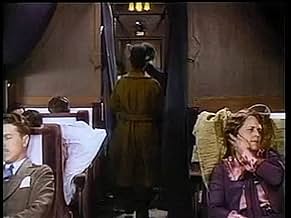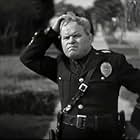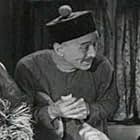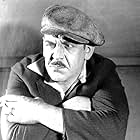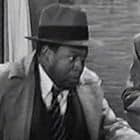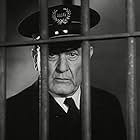IMDb RATING
6.9/10
1.6K
YOUR RATING
Taking the train to a show in Pottsville, musicians Stanley and Oliver run into trouble once settled in their sleeping car berth.Taking the train to a show in Pottsville, musicians Stanley and Oliver run into trouble once settled in their sleeping car berth.Taking the train to a show in Pottsville, musicians Stanley and Oliver run into trouble once settled in their sleeping car berth.
Harry Bernard
- Train Passenger
- (uncredited)
Sammy Brooks
- Short Train Passenger
- (uncredited)
Baldwin Cooke
- Train Passenger
- (uncredited)
Eleanor Fredericks
- Lady in Berth
- (uncredited)
Paulette Goddard
- Train Passenger
- (uncredited)
Pete Gordon
- Train Passenger
- (uncredited)
Charlie Hall
- Train Passenger
- (uncredited)
Pat Harmon
- Stationmaster
- (uncredited)
John M. O'Brien
- Man who trips over briefcase
- (uncredited)
Hayes E. Robertson
- Train Porter
- (uncredited)
S.D. Wilcox
- Train Conductor
- (uncredited)
Grace Woods
- Train Passenger
- (uncredited)
Storyline
Did you know
- TriviaA silent version was also made for theaters that at the time were not equipped to show talkies.
- GoofsAs Stan and Ollie scramble to board the train, their fiddle is clearly smashed to pieces, yet it is intact for the rest of the film.
- Alternate versionsReissued in 1936 with a new musical score, including the "Cuckoo" song by Marvin Hatley over the main credits, as well as a 1932 version of the song played by the Van Phillips Orchestra over the first scene at the depot.
- ConnectionsEdited into Noche de duendes (1930)
Featured review
THIS SHORT HAS long been familiar to us. Dating to those days preceding the advent of the home video craze and introduction of terms such as Beta, VHS and DVD, this title was in our home film library in the Super 8 Magnetic Sound format. This was a product of Blackhawk Films of Davenport, Iowa.
AS AN EXAMPLE of a Hal Roach LAUREL & HARDY production, it is what truly be called "a mixed bag." The story opens up well enough; featuring an excellent example of comedy of frustration. The first scene is set at a Railroad Station; where San & Ollie keep missing each other due to being lost in the crowd. After finally finding themselves, the attention shifts to difficulties with their luggage, sheet music collection and Laurel's Bull-fiddle. They are said to be vaudevillians.
AFTER SOME DIFFICULTY in communicating with a mumbling station master and getting on the moving train, they finally board. It was at this point that it was all down hill.
INTERPLAY WITH OTHER passengers is kept to a minimal. Also, a brief encounter with the Conductor proves too brief; although what they did have in the movie did show definite promise. The action all too quickly shifts from the Passenger Car to the Pullman Sleeper, with its bunk-bed style Berths, hence the title (get it, Schultz?).
IT IS HERE that we beginning to pray for some improvements; but a protracted scene involving the boys' attempting to undress for a night's sleep seems to occupy an inordinately long part of the allotted 2 reels. There is a monotonous succession of Stan & Ollie's frustration, which leads to their striking each other and threaten the other. It is during this exchange that Ollie makes repeated references to "crowding" and "don't hit me".
THERE IS ONE promising outbreak of "Reciprocal Destruction", a invention of Roach Studios; but it really doesn't involve participation by the Boys.
FOLLOWING ALL OF this ill conceived, crazy-quilt of events, the production team commits the cardinal sin of not knowing how to end it; which is the bane of the comedy movie, be it short or feature.
THE PROBLEM APPEARS to lie in the attempt to do the film as both a silent and as a talkie. It was 1929 and the conversion to sound was in full swing. But the idea was releasing it in the two formats would insure its availability to those theatres which had not yet converted. The resulting product was a movie that was in a sort of Limbo, being neither here or there.
WE HOPE WE'RE not seeming to be too harsh on the L & H production team, for it is still light years ahead of that stuff they did in the 1940s for Fox and MGM. It is worth at least a look.
AS AN EXAMPLE of a Hal Roach LAUREL & HARDY production, it is what truly be called "a mixed bag." The story opens up well enough; featuring an excellent example of comedy of frustration. The first scene is set at a Railroad Station; where San & Ollie keep missing each other due to being lost in the crowd. After finally finding themselves, the attention shifts to difficulties with their luggage, sheet music collection and Laurel's Bull-fiddle. They are said to be vaudevillians.
AFTER SOME DIFFICULTY in communicating with a mumbling station master and getting on the moving train, they finally board. It was at this point that it was all down hill.
INTERPLAY WITH OTHER passengers is kept to a minimal. Also, a brief encounter with the Conductor proves too brief; although what they did have in the movie did show definite promise. The action all too quickly shifts from the Passenger Car to the Pullman Sleeper, with its bunk-bed style Berths, hence the title (get it, Schultz?).
IT IS HERE that we beginning to pray for some improvements; but a protracted scene involving the boys' attempting to undress for a night's sleep seems to occupy an inordinately long part of the allotted 2 reels. There is a monotonous succession of Stan & Ollie's frustration, which leads to their striking each other and threaten the other. It is during this exchange that Ollie makes repeated references to "crowding" and "don't hit me".
THERE IS ONE promising outbreak of "Reciprocal Destruction", a invention of Roach Studios; but it really doesn't involve participation by the Boys.
FOLLOWING ALL OF this ill conceived, crazy-quilt of events, the production team commits the cardinal sin of not knowing how to end it; which is the bane of the comedy movie, be it short or feature.
THE PROBLEM APPEARS to lie in the attempt to do the film as both a silent and as a talkie. It was 1929 and the conversion to sound was in full swing. But the idea was releasing it in the two formats would insure its availability to those theatres which had not yet converted. The resulting product was a movie that was in a sort of Limbo, being neither here or there.
WE HOPE WE'RE not seeming to be too harsh on the L & H production team, for it is still light years ahead of that stuff they did in the 1940s for Fox and MGM. It is worth at least a look.
Details
- Release date
- Country of origin
- Official site
- Languages
- Also known as
- Berth Control
- Filming locations
- Palms Depot, Heritage Square Museum - 3800 Homer Street, Montecito Heights, Los Angeles, California, USA(this is where the ending train station building was moved)
- Production company
- See more company credits at IMDbPro
- Runtime19 minutes
- Color
- Sound mix
Contribute to this page
Suggest an edit or add missing content






